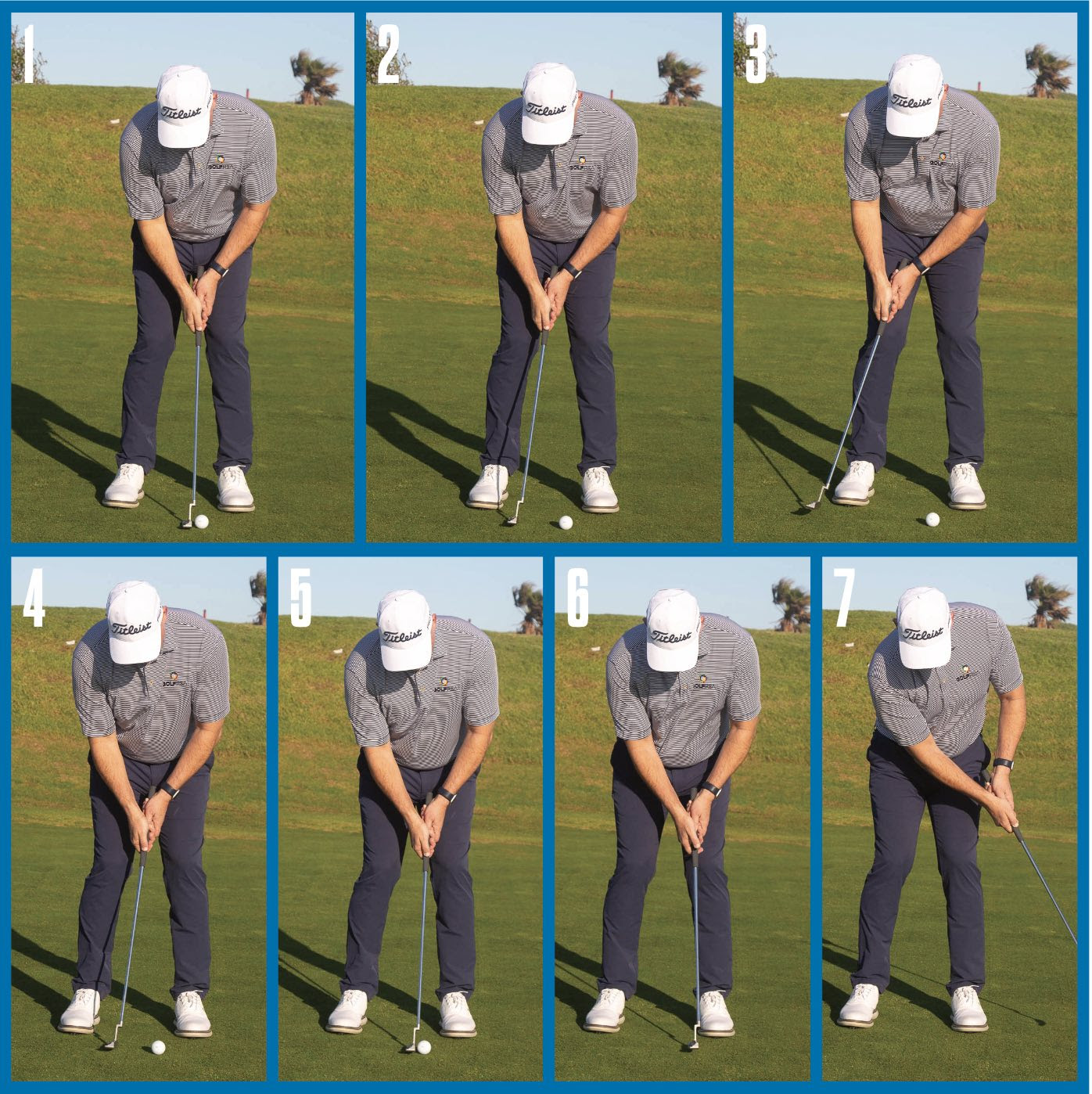

Putting is often underestimated in golf, even though it represents a major part of the game. On average, a golfer uses their putter twice as much as their driver. A missed putt from less than one meter can cost as much as a ball in the water. Improving this aspect of your game is therefore essential to progress on the course and lower your score.
In this article, we offer you proven techniques to refine your posture, master your ball touch, and understand green speed through tips from the PuttZone method, developed by Stéphane Barras, a world-renowned putting coach.
Posture is the foundation of every good putt. An incorrect position can lead to alignment errors and a lack of precision in the movement. To optimize your stance and achieve perfect contact with the ball, it is essential to follow these basic rules.
A stable posture starts with the position of the feet. Stand with your feet shoulder-width apart. Your back should remain straight, and your eyes should be positioned directly above the ball. This position allows you to clearly visualize the line of play and ensure optimal alignment. Poor eye alignment can result in directional errors, making it difficult to control the ball’s trajectory.
The grip is another crucial element. To ensure an effective hold and avoid excessive wrist action, hold the putter in the palms of your hands. A firm but relaxed grip is essential to control the clubface. The right hand should aim directly at the target, which helps you guide the ball toward the hole. A grip that is too tight can cause unnecessary tension and harm the fluidity of the movement.
The movement of the shoulders plays a key role in the consistency of your putt. Imagine that your shoulders and arms form a triangle. Throughout the entire movement, this triangle must remain stable. This allows optimal control of the ball’s trajectory and power. Stability of the shoulder triangle also ensures the putter stays on the line of play, reducing the risk of deviation.
To achieve good contact and promote a smooth roll, the ball must be positioned slightly past the low point of the putter’s arc, about 5 cm beyond it. This allows the putter to strike the ball on the upswing, encouraging good rolling and a better trajectory. Contact that is too early or too late can cause the ball to hop or deviate undesirably.
Putting is not just about posture but also technique. There are two main approaches: the piston swing and the pendulum movement. Each technique offers specific advantages depending on the playing situation.
The piston swing is characterized by a short backswing and a longer follow-through. Specifically, the backswing accounts for one third of the movement, while the follow-through makes up two thirds. This technique allows better control of distance because the ball rolls more consistently. It is especially useful on fast greens, where good speed control is crucial to avoid overshooting the hole.
The pendulum movement consists of a backswing and follow-through of equal length, evenly divided 50/50. This gesture promotes a more delicate touch and better accuracy, particularly on short putts. The pendulum also helps maintain a steady rhythm, which reduces variations in power from one stroke to another.
Whether you use the piston swing or the pendulum, one element remains essential in both cases: the follow-through. It must be smooth and without jerks to keep the putter aligned on the line of play. A good ball accompaniment ensures better speed control and increased accuracy, whether for a short or long putt.
A good part of putting relies on the ability to assess green speed. Knowing this speed allows you to adjust your stroke accordingly to avoid underestimating or overestimating the power needed.
Green speed is measured using a tool called the Stimpmeter. This device determines the distance a ball rolls on the green, thereby allowing calculation of its speed. Here is how the process works:
Green speeds vary depending on the courses and weather conditions. Here is a scale of speeds, expressed in feet, that you may encounter on greens:
To put this in perspective, the greens at Augusta National during the Masters Tournament roll at 15 feet, one of the fastest courses in the world. These speeds demand exceptional mastery of the putter and an extremely delicate touch.
Mastering the basics of putting, from posture to understanding green speed, is essential to reduce the number of putts per round. Adopting a good technique, whether piston or pendulum, allows you to improve your consistency and accuracy. By refining your posture, grip, and better understanding the greens you play, you can optimize your performance and avoid costly mistakes.
With these elements in hand, it is time to spend more time on the greens working on your putting. Remember that putting accounts for about 40% of your strokes in a round of golf. It can therefore make the difference between a good score and a disappointing card.

Passionate golfer and co-founder of Teech Golf. My mission with Teech is to build technology that becomes a true companion in helping you improve your game.
Downloard Teech Golf on iOS/Android and get your free customized training plan with video by top coaches !
Download app